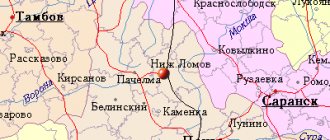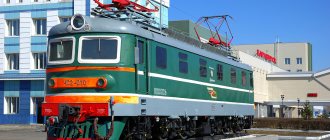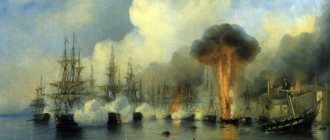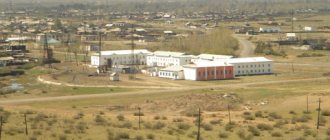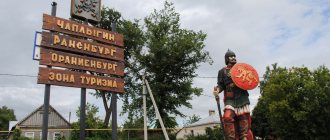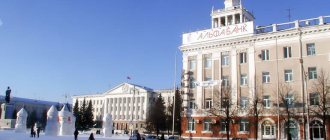City in Tver region, Russia
| Likhoslavl Likhoslavl | |
| City [1] | |
| Water tower at Likhoslavl station | |
| Coat of arms | |
| Location of Likhoslavl | |
| Likhoslavl Location of Likhoslavl Show map of Russia Likhoslavl Likhoslavl (Tver region) Show map of Tver region | |
| Coordinates: 57°08'N 35°29'E / 57.133°N Latitude 35.483°E / 57.133; 35 483 Coordinates: 57°08'N 35°29'E. / 57.133 ° N Latitude 35.483°E / 57.133; 35 483 | |
| A country | Russia |
| Federal subject | Tver region [1] |
| Administrative region | Likhoslavl district [2] |
| urban village | Likhoslavl [2] |
| Based | 1624 |
| City status from | 1925 [3] |
| Height | 170 m (560 ft) |
| population size (2010 Census) [4] | |
| • General | 12 257 |
| • Evaluate (2018) [5] | 11 594 ( -5,4% ) |
| Administrative status | |
| • Capital from | Likhoslavl district [6], urban settlement Likhoslavl [2] |
| Municipal status | |
| • Municipal district | Likhoslavl municipal district [7] |
| • Urban village | Urban settlement Likhoslavl [7] |
| • Capital from | Likhoslavl municipal district [7], urban settlement of Likhoslavl [7] |
| Timezone | UTC+3 (MSK[8]) |
| Postal code [9] | 171210, 171239 |
| OKTMO ID | 28638101001 |
| Web site | admlihoslavl.ru |
Likhoslavl
(Russian: Likhoslavl) is a city and administrative center in Likhoslavlsky District in Tver Oblast, Russia, located on Moscow-St. Petersburg Railway, 41 km northwest of Tver, the administrative center of the region. Population: 12,257 (2010 census); [4] 12,515 (2002 census); [10] 13,449 (1989 census). [eleven]
History[edit]
Ostashkovo settlements once stood
(
Ostashkovo
, founded in 1624) and Likhoslavl (first mentioned at the beginning of the 19th century). [3] Likhoslavl grew up as a village serving the railway station. It was part of Novotorzhsky Uyezd of Tver Governorate. [12] It received city status in 1925. [3]
On July 12, 1929, provinces and districts were abolished. [13] Likhoslavl District, with its administrative center in Likhoslavl, was created in the Tver Okrug in the Moscow Region. [13] On July 23, 1930, the districts were abolished, and the districts were directly subordinated to the region. [14] On January 29, 1935, the Likhoslavl region was transferred to the newly formed Kalinin region. [13] On July 9, 1937, the Likhoslavl district became part of the Karelian National Okrug, formed as an autonomy of Tver Karelians [13], and became its administrative center.[15] On February 7, 1939, the district was abolished. [13] On February 1, 1963, during Nikita Khrushchev's failed administrative reform, the Likhoslavl district was united into the Torzhok district, but on March 4, 1964 it was restored. [13] [3] In 1990, the Kalinin region was renamed the Tver region. [16]
Likhoslavl
origin of name
The city got its name from the Likhoslavka River, on the banks of which the Likhoslavl estate was once located. This river has not existed for a long time: in the middle of the 19th century. it was dammed and an artificial lake was created, which for a long time served as a source of water for the steam locomotives of the Nikolaev Railway.
The origin of the toponym “Likhoslavl” has not been reliably established. As one legend says, during the Mongol-Tatar invasion, one of the Tatar detachments reached the village of Kratusovo, located on the Kava River, 2.5 km northeast of modern Likhoslavl. The soldiers asked the way to Torzhok. Local peasants pointed them to the west and then watched from the mountain as Tatar warriors and their horses drowned in a swamp. Hence such “dashing” names: Likhovidovo (a village nearby), Likhoslavka, Likhoslavl.
XIX – early XX centuries.
The current city arose on the site of the village of Ostashkovo, the village (estate) of Likhoslavl and the railway station of the Ostashkovskaya Nikolaev Railway.
The first mention of Ostashkov is contained in the scribe books of the Novotorzhsky district for 1624. Initially, the village developed as a yam - a small post station (hence the name Yamskaya street). In the List of populated places of the Tver province for 1859, Ostashkovo is listed as a state-owned village of the Novotorzhsky district near the Cheremushka river, 33 versts from the district town of Torzhok. It had 49 households, which included 274 residents of both sexes - 129 males and 145 females. The village was located “along the Nikolaev railway, from St. Petersburg to Moscow.” The camp administration was located in Ostashkov.
The town of Likhoslavl was first mentioned in the revision lists of 1816; at that time it belonged to captain Ivan Ivanovich Sulin and numbered 18 peasants and 23 domestics. The estate is indicated on the map of the Tver province in 1848 with one courtyard on the bank of the Likhoslavka River. In the List of populated places of the Tver province for 1859, Likhoslavl is listed as the owner’s village of the Novotorzhsky district “near a well,” 34 versts from the district town. The village had 7 households, in which there were 29 residents of both sexes - 7 males and 22 females. It was in the possession of the landowner Moshnin.
According to the List of populated places of the Tver province for 1859, at the Ostashkovskaya Nikolaevskaya railway station “at the reservoir” there were 10 courtyards, in which there were 87 residents of both sexes - 68 males and 19 females. There was a postal station and a post office here. By 1869 there were 228 people at the station. On May 30, 1870, train service to Torzhok was opened, Ostashkovskaya station became a railway junction.
In 1875, in the village of Ostashkovo, the zemstvo rented part of the building of the merchant and owner of the grain store Bushmarin, where they opened a zemstvo two-class school (now Secondary School No. 2). The senior teacher there was Vasily Pavlovich Shanturin, who graduated from the Novotorzh Teachers' Seminary, the teacher of the law was the priest of the Kavskaya Church Grigory Petrovich Smirnov, the trustee was the owner of the village of Likhoslavl, landowner Moshnin. In the early 1880s. The school was located in a specially built wooden building on Tverskaya Street (now Gagarin Street, 32), and in 1891 - in a new two-story building on Aptekarskaya Street, the first floor of which was made of stone.
In 1887, in Ostashkov, with donations from the merchant Zverkov and local residents, the Church of the Assumption of the Blessed Virgin Mary was erected. Grigory Petrovich Smirnov served as its first priest. The village of Ostashkovo becomes a village.
In 1903, a two-year school of the Ministry of Public Education (now Secondary School No. 7) was opened at the station, which educated mainly children from low-income families of railway workers and employees.
The name Ostashkovo often became a cause of confusion: cargo was sent to the district town of Ostashkov and vice versa. In 1907, by decision of the provincial authorities, the village of Ostashkovo was united with the Ostashkovskaya station and renamed Likhoslavl. In the same year, a zemstvo insurance agency and a two-class railway school were opened. Likhoslavl was already quite a large village. There was a trading area, there were commercial and industrial establishments, there were 209 households: 5 - noble, 2 - clergy, 4 - bourgeois, 46 - military people, 41 - workers, artisans and handicraftsmen, 111 - peasants. There was a lively trade in cobblestones, cattle, and flax in the village.
In 1914, according to the will of a local landowner, the Novotorzh zemstvo built a zemstvo hospital in the nearby village of Lochkino.
After the revolution
On December 10, 1917, the Council of Workers', Soldiers' and Peasants' Deputies was formed in the village, which carried out the management of five volosts, accounting and requisition of grain.
In 1925, by decree of the All-Russian Central Executive Committee, the village of Likhoslavl was transformed into a city. In 1926, a plant for the primary processing of flax was built and put into operation, becoming the second in the region after Rzhevsky. The plant's products were supplied to different regions of the country and were also exported. The “Collective Labor” artel, which was part of the largest knitting association in the region, produced women's and men's sweaters, skirts, socks, and stockings. The "Chemical Production" artel produced stamp paint, ink, office glue, artificial drying oil, construction resin, etc. The "Progress" industrial artel, the "Dvigatel" metalworking and mechanical workshops, and a dairy factory operated. The printing house published the newspaper “Karelskaya Pravda” in two languages – Russian and Karelian. In 1926, the city's population was 2,962 people.
In 1930, a collective farm university was founded in Likhoslavl, which was later transformed into a communist two-year agricultural school. Komsomol members of the school, under the leadership of its director Ilyin, created a city garden. In the 1930s There were seven educational institutions in the city: two secondary schools, an elementary and junior high school, a Karelian pedagogical school (the only one in the region), a peat technical school, and a regional school for tractor foremen and combine operators.
In the pre-war years, there were a local history museum in Likhoslavl, two trade union and regional libraries, a club, a cinema, a nursery (since 1936), three kindergartens, and a House of Pioneers (since 1937). The city's population tripled in ten years, from 1926 to 1936, to 8,856 people. In 1937–1939 Likhoslavl was the administrative center of the Karelian National Okrug.
In 1940, there were over 500 residential buildings in Likhoslavl. The urban layout was formed under the influence of the railway. On Sovetskaya Street, stretched along the railway track, economic and administrative institutions and trading establishments were concentrated. The largest buildings in the city were also located here - former merchant mansions, mostly stone and two-story. There was no sewerage or water supply in Likhoslavl at that time, the city was approximately 60% illuminated, no more than half of the streets were paved, and landscaping was just beginning.
War and post-war years
In the fall of 1941, the front line passed not far from Likhoslavl. The underground RC of the All-Union Communist Party of Bolsheviks coordinated the fight behind enemy lines, a partisan detachment of 92 fighters was created, and separate groups were formed to carry out combat missions. Residents of the city built defensive fortified lines from the Vinokolsky swamp to Lake Kavsky; a total of 40 bunkers were built.
Likhoslavl was not occupied by the fascist invaders, but great damage was caused to it by German aircraft, which repeatedly bombed the city. More than 100 residential buildings, the building of the district party committee, a train station, a hospital, two power plants, two canteens, a cinema and other buildings were destroyed. In 1941, for some time, the headquarters of I. S. Konev, commander of the Kalinin Front from October 1941 to August 1942, was based in the city.
The restoration of the municipal economy in Likhoslavl began already in 1942–1943. The work of the flax mill, MTS, and the “Collective Labor” and “Progress” artels was resumed as soon as possible. In 1948, the pre-war level of industrial production was largely restored.
By order of the Council of Ministers of the RSFSR, construction began in 1947 on the basis of a city power plant that had been mothballed in the pre-war years. In 1951, the plant for the production of water meters, whose team consisted of 27 workers, produced its first products. By this time, the following buildings had been built: the main building, a boiler room, a carpentry department, and a foundry shop. In 1961, the enterprise was renamed the Svetotekhnika lighting products plant.
In 1959, on the basis of mechanical workshops, the Likhoslavl Radiator Plant was founded - at that time the only specialized enterprise for the production of copper-brass automobile radiators. The plant became one of the first in the world to master the technology and begin producing brazed aluminum radiators.
In 1978, 9 enterprises operated in Likhoslavl, the largest of which were a flax plant, a radiator plant, and a glove factory.
Modernity
In 1997, the city became the center of the newly created National-Cultural Autonomy (NCA) of Tver Karelians; since 1996, the newspaper (monthly) “Karelian Word” has been published. Currently, Likhoslavl is one of the cities under active construction in the Tver region.
Economics [edit]
Industry[edit]
In Likhoslavl there are enterprises in the electrical, ceramic, and food industries. [17]
Transport[edit]
Likhoslavl station
Likhoslavl has a railway station on the railway connecting Moscow and St. Petersburg. Another railway branches to the west and heads to Torzhok and then to Ostashkov and Rzhev.
The city is connected by road to Torzhok, where it has access to the M10 highway connecting Moscow and St. Petersburg. The road Likhoslavl is also connected to Medny, where there is another exit onto the M10.
Dinner
Oh, that was something! The restaurant (yep, that's a real restaurant) Seda at the hotel looks decent from the outside. We were promised lunch of Karelian cuisine and charged 450 rubles each. from the nose. By the way, for this money you can eat a business lunch in a good restaurant in the center of Moscow.
So, at the height of summer, a salad of “plastic” vegetables was served as an appetizer, absolutely tasteless, a cat’s portion. Karelian fish soup with milk looked and smelled disgusting, there were some scraps of fish floating in it, and the broth generally seemed like chicken to me. Also past and not edible.
The main course was cold pork stew with potatoes, which was absolutely not tasty. There was also compote and Karelian wicket pie. So tell me, does it cost 450 rubles? I won’t say for sure, but it looks like it was the first time the group had been brought to this establishment; even the guide said that the food on this excursion had previously been very tasty. I went to the website of this “restaurant”, and there were no dishes there at all that they fed us. And the prices there are very low, i.e. 450 rubles. for a set lunch of disgusting dishes is a rip-off and disrespect for tourists. https://www.sedahotel.net/menu
Culture and recreation[edit]
Karelian National Museum in Likhoslavl
There are seven objects in Likhoslavl classified as cultural and historical heritage of local significance. All this is connected with the events of the Great Patriotic War, and although the city was not occupied by German troops, the Likhoslavsky district was located near the front line. [18]
Likhoslavlsky district is one of four districts of the Tver region, where a significant number of Tver Karelians live. [19] In Likhoslavl there is a local history museum, mainly dedicated to the culture and ethnography of Tver Karelia. [20]
Sightseeing tour of Likhoslavl
This is very loud. We were simply driven through the city non-stop in a “look left, look right” style. I have no complaints here, since this type of review was stated in the program. But then an outrageous incident occurred. We still had time before lunch, but instead of, for example, stopping near the old water tower or showing the Cathedral inside, we went to the Pyaterochka store!
Why, you need to go to an ATM, because the marmalade store does not accept cards. And it began, one went to withdraw money, others needed bread from the stall for some reason. We sit and wait... We drive to the restaurant, they turn us around because it’s still early. The guide couldn’t think of anything better than to take us to a store with some of their local alcohol. For what? And when I saw “Pyaterochka” near the restaurant where we had lunch, in the neighboring house, it finally finished me off. It is immediately clear that the guide herself visited this restaurant for the first time.
Links[edit]
Notes[edit]
- ^ ab Law No. 34-ZO
- ^ abcd Law No. 34-ZO establishes that the boundaries of settlements (administrative territorial units) are identical to the boundaries of urban and rural settlements (municipalities), and the boundaries of administrative districts are identical to the boundaries of municipal entities. In Law No. 35-ZO, which defines the boundaries and composition of the municipalities of the Likhoslavl municipal district, the city of Likhoslavl is included in the composition and administrative center of the Likhoslavl urban settlement of this area.
- ^ a b c d History of the region (in Russian). Official website of the Administration of the Likhoslavl district of the Tver region. Archived from the original on September 23, 2014. Retrieved August 25, 2014.
- ^ a b Federal State Statistics Service (2011). “All-Russian Population Census 2010. Volume 1" [All-Russian Population Census 2010, vol. 1]. All-Russian Population Census 2010 [All-Russian Population Census 2010]
. Federal State Statistics Service. - "26. The size of the permanent population of the Russian Federation by municipalities as of January 1, 2022". Federal State Statistics Service. Retrieved January 23, 2022.
- ^ ab State Committee of the Russian Federation on Statistics. Committee of the Russian Federation for Standardization, Metrology and Certification. No. OK 019-95 January 1, 1997 “All-Russian classifier of objects of administrative-territorial division. Code 28 238", ed. changes No. 278 / 2015 dated January 1, 2016. (Goskomstat of the Russian Federation. Committee of the Russian Federation for Standardization, Metrology and Certification. No. OK 019-95 January 1, 1997. Russian classification of administrative divisions) (OKATO).
Code 28 238 , as amended by Amendment No. 278/2015 of January 1, 2016). - ^ abcde Law No. 35-ZO
- "On the Calculation of Time". Official Internet portal of legal information
. June 3, 2011. Retrieved January 19, 2022. - Post office. Information and computing center of OASU RPO. ( Post office
).
Search for postal service objects ( postal Search for objects
) (in Russian) - ↑
Federal State Statistics Service of Russia (May 21, 2004).
“The population of Russia, the constituent entities of the Russian Federation as part of federal districts, urban settlements, settlements, settlements of 3 thousand or more people” [Population of Russia, its federal districts, federal districts, districts, urban settlements, rural settlements - administrative centers and rural settlements with a population of more than 3,000 people] (XLS). All-Russian Population Census 2002
. - “All-Union Population Census of 1989. The current population of union and autonomous republics, autonomous regions and districts, territories, negative phenomena, urban settlements and rural district centers” [All-Union Population Census of 1989: current population of union and autonomous republics, Autonomous regions and districts , territories, regions, districts, towns and villages performing the functions of district administrative centers. All-Union Population Census of 1989 [All-Union Population Census of 1989]
.
Institute of Demography of the National Research University: Higher School of Economics [Institute of Demography of the National Research University: Higher School of Economics]. 1989 - via Demoscope Weekly
. - Wilson, page 249, entry 7672.
- ^ a b c d e Information on changes in the administrative-territorial division of the Tver region - Kalinin region (in Russian). Archives of Russia. Archived from the original on April 19, 2012. Retrieved August 25, 2014.
- Snytko et al., pp. 87
- Golovkin, Anatoly Nikolaevich. “Archival copy” Karelian National District (in Russian). NKA Tver Karelians. Archived from the original on April 8, 2014. Retrieved April 7, 2014.CS1 maint: archived copy as title (link)
- ↑
Decree of July 17, 1990 - Enterprises of the Likhoslavl region (in Russian). Official website of the Administration of the Likhoslavl district of the Tver region. Archived from the original on March 29, 2014. Retrieved March 28, 2014.
- Monuments of history and culture of the peoples of the Russian Federation (in Russian). Ministry of Culture of Russia. Retrieved June 2, 2016.
- Manakov, A.G. (2002). Geocultural space of the north-west of the Russian Plain: Dynamics, structure, hierarchy (in Russian). Pskov: . ISBN 5-902166-02-0.
- Karelian National Museum of Local Lore (in Russian). Russian Network of Cultural Heritage. Archived from the original on March 31, 2014. Retrieved March 28, 2014.
